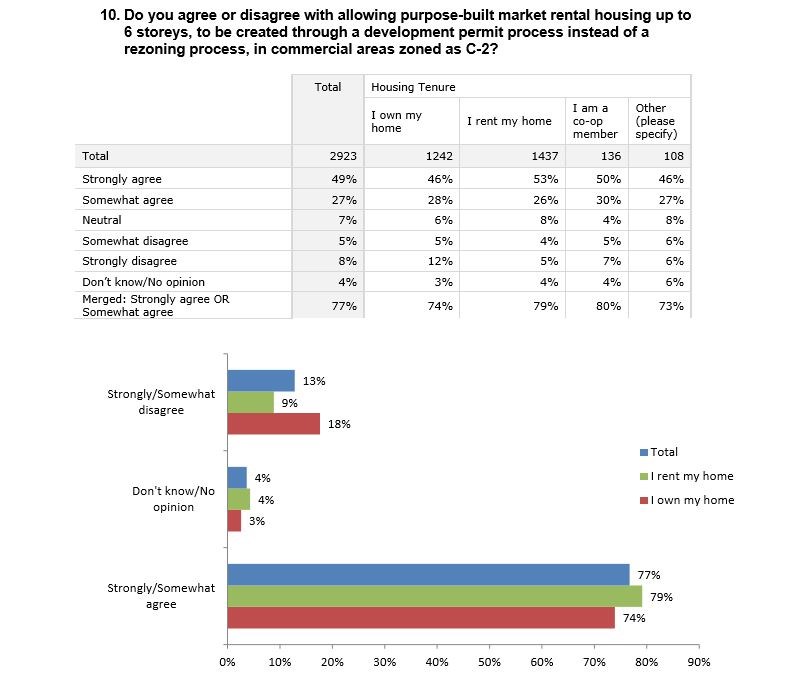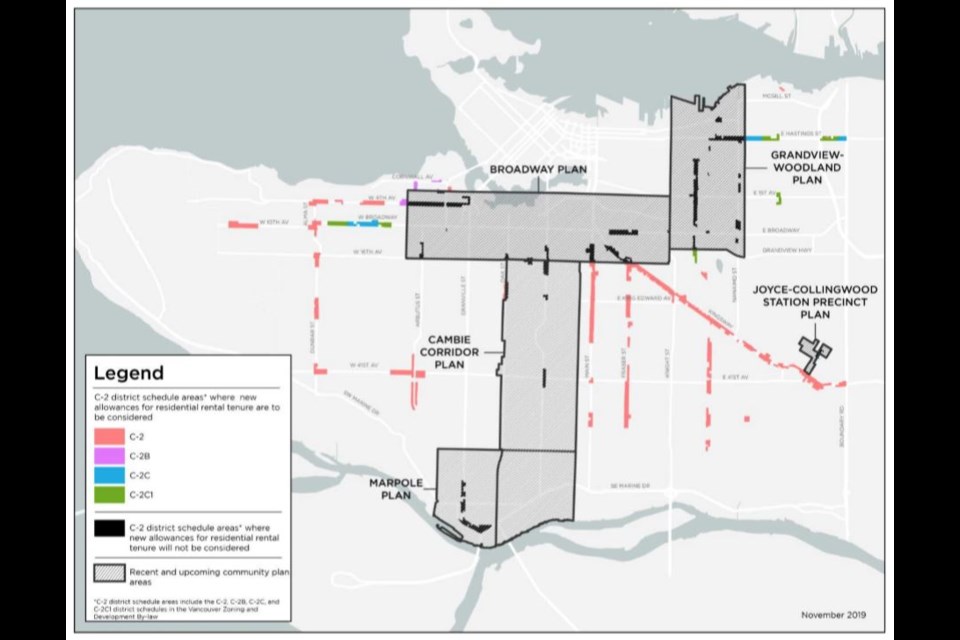Renters, policy nerds, developers and others who make a living in the housing industry now have another City of Vancouver report to read that offers ideas to improve the city’s rental housing market.
It’s light reading at 236 pages.
And wait until you see the maps and charts!
Sarcasm aside, I’ve got to be frank here: The “Rental Incentives Review Phase II Report Back,” which was released this week, may be good reading for industry types versed in the language of DCLs, district schedules and density allowances, but not so much for plain-talking renters.
These would be the same renters overwhelmed by the piles of reports and repetitive discussion promising rental housing is going to someday be more plentiful and affordable.
“Just build it already” is a common refrain from renters at council meetings, speakers at tenant-based forums and angst-ridden housing advocates filling social media channels with words of legitimate frustration.
Some of the language in the city’s new report adds to that frustration.
An example: “One key opportunity is to streamline the process for rental development up to six storeys in C-2 zones outside recently approved community plan areas by shifting from the current rezoning requirement to a new process under district schedules, utilizing the city’s new authority to limit certain new developments to residential rental tenure (‘residential rental tenure zoning’).”
I kinda, sorta know what that means, but that’s just because I’m paid to break down jargon and summarize reports into words and sentences that I hope most people can understand.
But at 236 pages, which is about the number of pages I’ve read of a 620-page novel I started several months ago, I’m calling an audible on completing an exhaustive analysis of this city staff novella.
Instead, I’ve chosen to pick one recommendation from the report — complete with a map (see above) — that suggests the city will soon be overrun by six-storey rental buildings.
I’m exaggerating, but it’s a fact that city staff now wants six-storey rental building proposals for city commercial zones known as C-2 to no longer require a rezoning process.
Which is kind of a big deal, and is a result of the provincial government’s amendments to the Local Government Act and Vancouver Charter to allow the city to zone strictly for rental.

The zones run predominantly along parts of Kingsway, Fraser, Main and include pockets at West 41st Avenue and Arbutus Street, sections of Dunbar Street and areas of West Fourth and West 10th avenues.
Speculators with property in those areas must be rubbing their hands together in anticipation of making some serious dough on a spike in land value.
That assumption, of course, is based on city council agreeing to let six-storey rental buildings proliferate without all the steps tied to a rezoning process, including a public hearing.
Apparently, that’s not going to happen — the speculation, that is. The staff report relies on analysis from Coriolis Consulting Corp. to reach this conclusion.
“Staff do not anticipate increased land values in C-2 zoning districts as a result of the proposed zoning and development bylaw amendments,” said the report, noting there is support from residents polled about the six-storey idea.
“Coriolis’ results show that even with rental incentives being proposed, the rate of return on costs for strata development in C-2 areas exceeds the rate of return for rental development.”
In other words, the money is still in condo development.
“The proposed amendments are not anticipated to produce increased financial incentive for overall C-2 development,” the report continued. “Rather, we expect to see a shift from some of the anticipated strata developments to rental.”
The report makes it clear that incentives that allow developers to add more density to a project, receive discounts in development cost fees and not have to build as many parking spots is still the way to go to get more rental housing built.
The city’s rental housing incentive policies have applied to C-2 zoning areas since 2009. In fact, the current Rental 100 policy allows consideration for increased heights and densities — through rezoning — in C-2 zoning district areas.
That policy, of course, only applies to projects where 100 per cent of the units are purpose-built rental.
So how’s that worked?
A significant share of new rental has been built in C-2 commercial zones since incentives were introduced a decade ago, with 22 purpose-built rental housing developments and 1,165 purpose-built rental units approved.
Still, more is needed, as Mayor Kennedy Stewart made clear in his recent “state of the city” address to the Greater Vancouver Board of Trade.
The staff report makes it clear the federal government needs to return to a time when federal incentive programs enticed developers to build rental housing.
That time was between 1950 and 1979.
Fact one: The peak production years for purpose-built rental housing in Vancouver were in the 1960s, with more than 25,000 new units built.
Fact two: Today in Vancouver, purpose-built rental housing constructed between 1950 and 1979 accounts for 63 per cent of the current purpose-built rental supply.
And if people need a reminder why more rental is needed in the city, the percentage change in the benchmark price of a single-detached home on the East Side has risen by 136 per cent since 2008.
@Howellings



